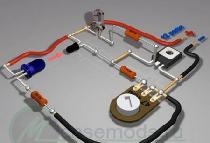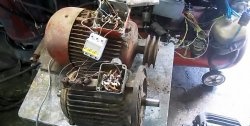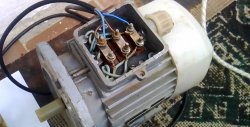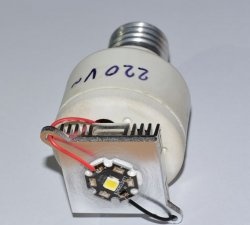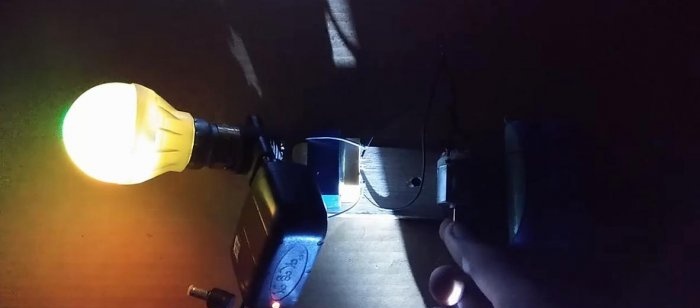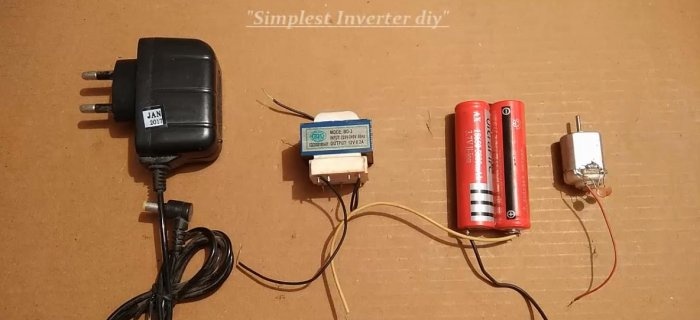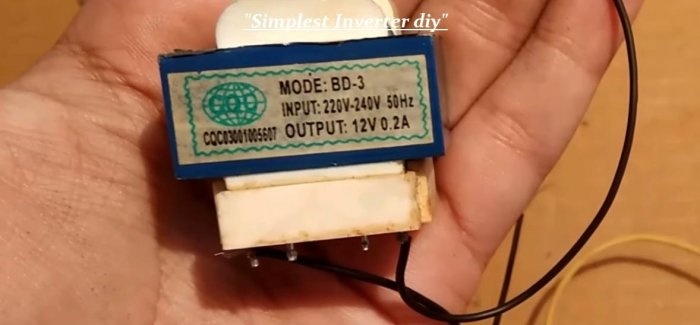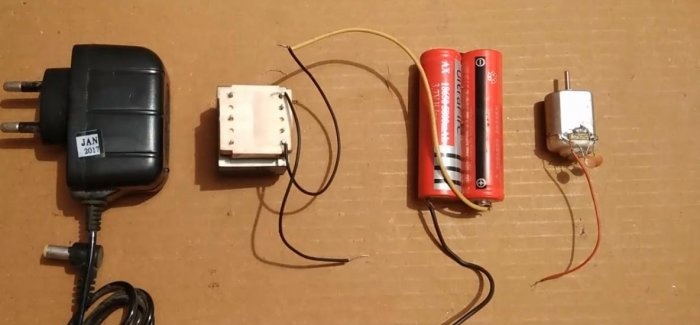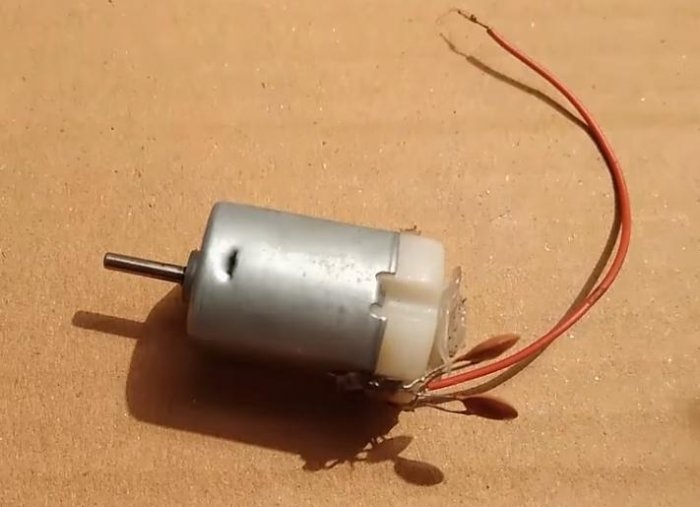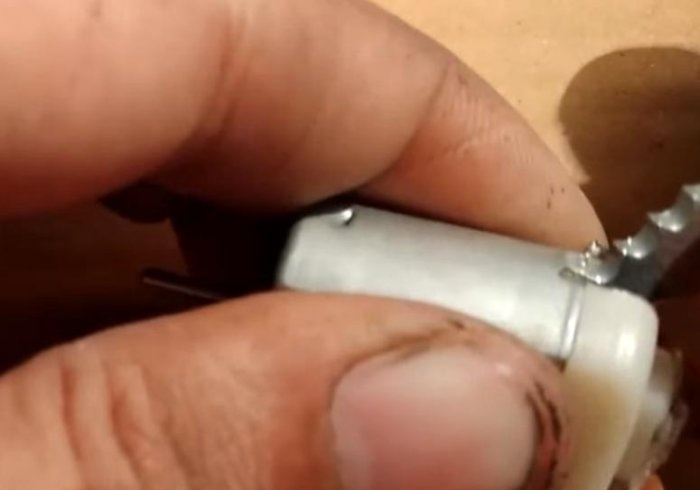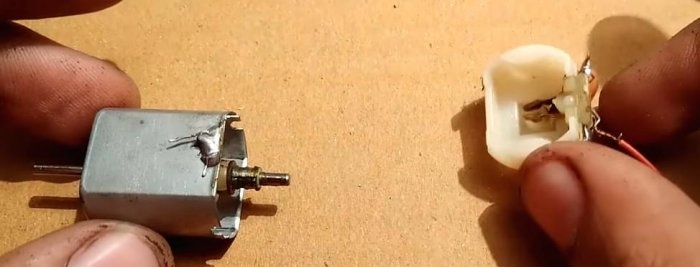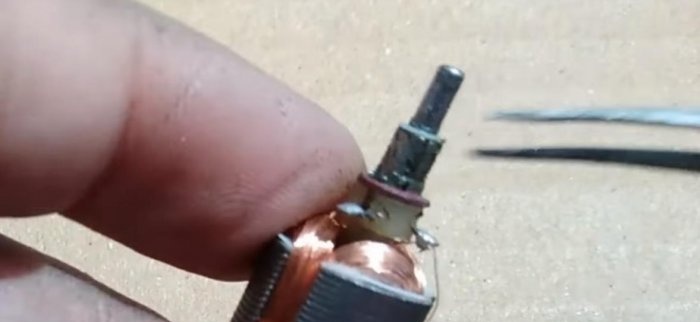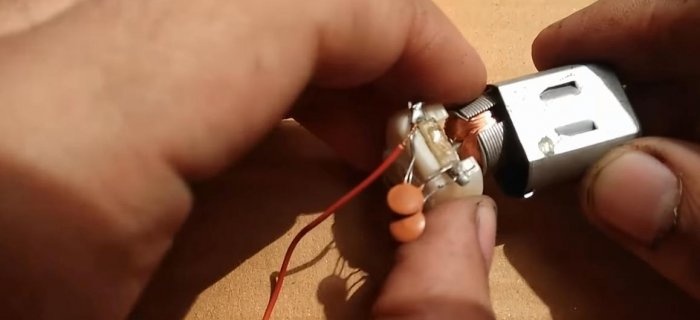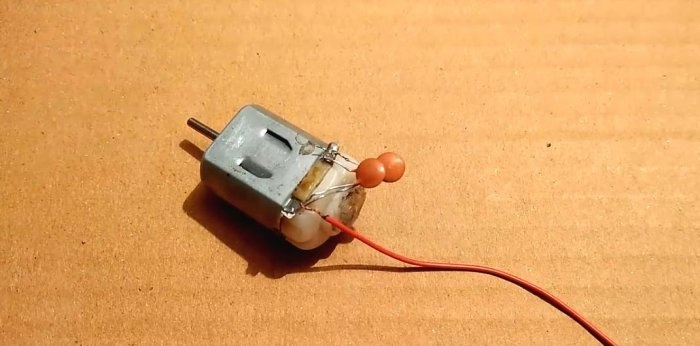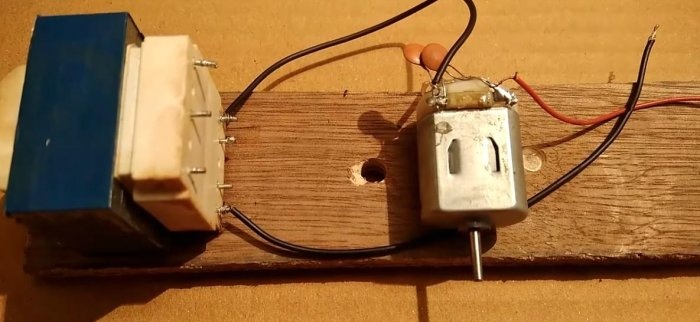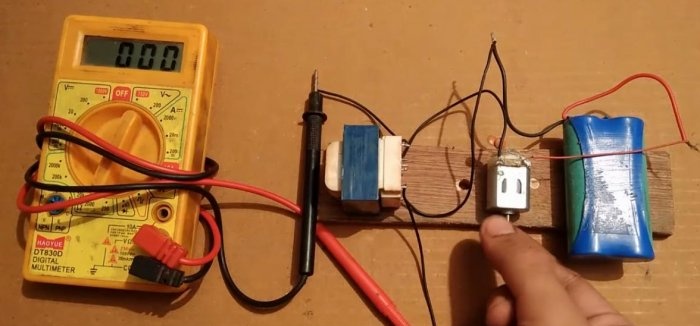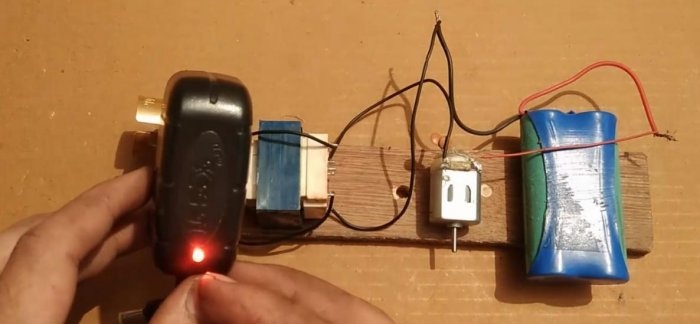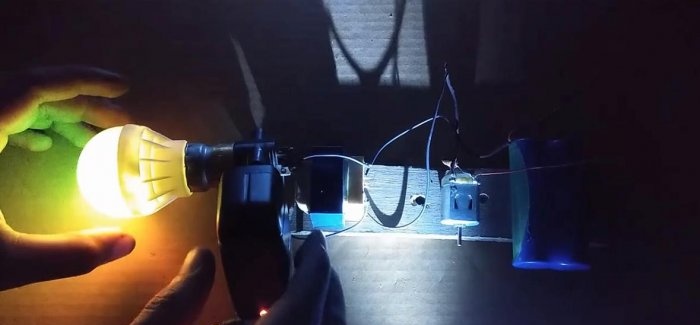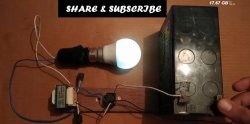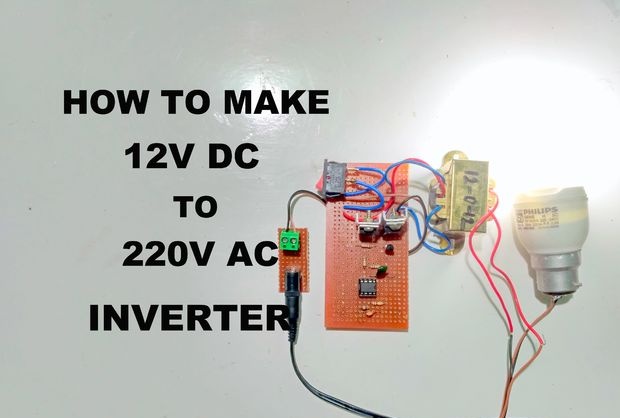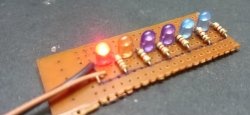The simplest inverter from a motor without transistors
Who would have thought that a simple inverter could be made without the use of transistors, microcircuits and complex circuits. Last time I showed how to make an inverter without transistors on a relay. As it turns out, this is not the only way to build an inverter. I will show how you can convert electrical energy from 12 V DC to 220 V AC.
What will you need?
Step-up transformer. Naturally, before it worked as a buck, but we will use it in reverse. Such transformers can be found in receivers, electronic watches, and old tape recorders.
Inverter assembly
In fact, our circuit consists of only three parts connected in series to each other. This is a transformer connected to the circuit with a low-resistance winding (the high-resistance winding is the output of the inverter). Batteries - batteries or accumulators. And a switching element, in the role of which an electric motor will be used, which can be removed from broken children's toys.
Here's the motor itself. You can’t just insert it into the circuit - it won’t perform switching. We need to refine it.
To do this, we disassemble the motor.
We remove the back part, first bending the holders.
The anchor needs to be improved. This consists of disconnecting one winding from the contacts. To do this, we cut off the wires of any one winding.
We assemble the motor.
After such modification, the motor will not be able to rotate fully, since one winding will be turned off. But if you start it by hand, then the motor has enough power to maintain rotation. And the absence of one winding will periodically break the power circuit between the power elements and the transformer, where the motor is connected in series.
We connect it to the circuit.
Connect to the output of the transformer multimeter. Then turn on the power. It happens that the motor starts on its own, but usually it doesn’t. Then we start the shaft by hand, turning it lightly.
The inverter is working! Indications multimeter jump from zero to about 250 V. This is normal, since this is a technical inverter for powering primitive devices.
We try to connect the charger. Everything works fine - the phone is charging.
We connect the light bulb - the lamp shines.
Of course, there is no need to talk about the quality of the converted energy, but in difficult life situations such a craft may well come in handy.
Similar master classes
Particularly interesting

